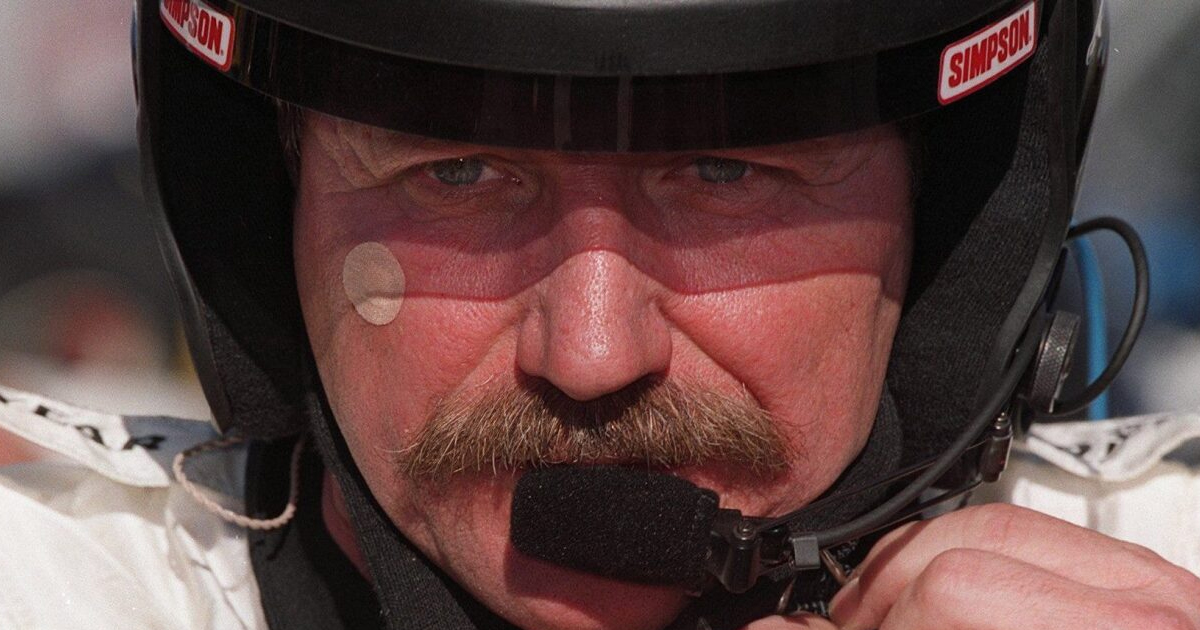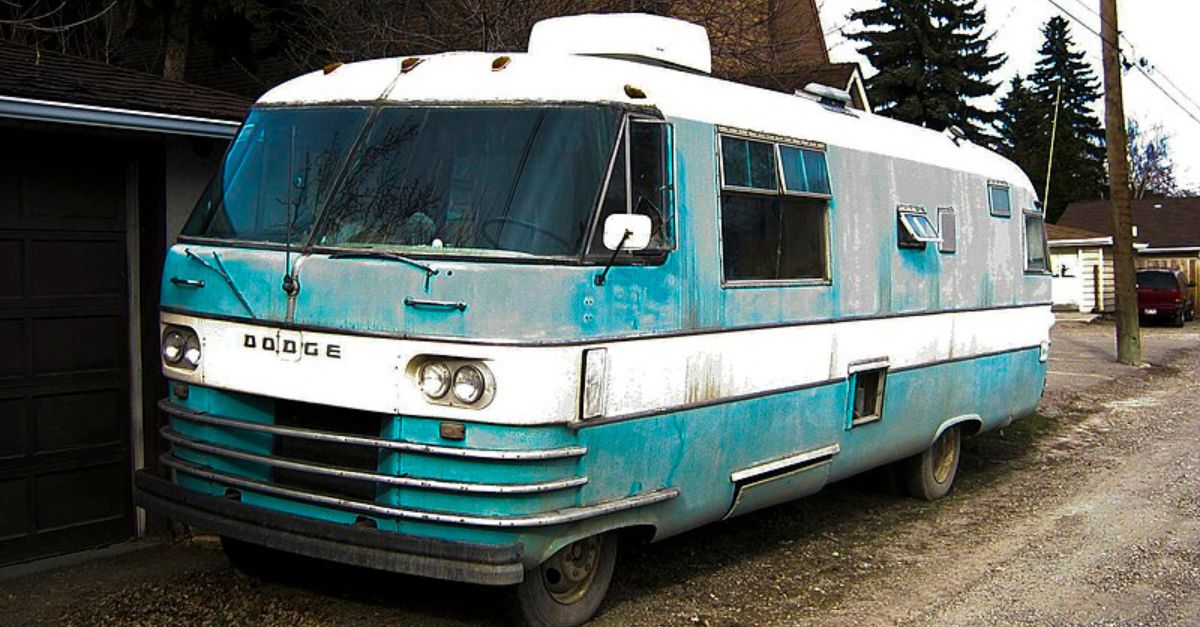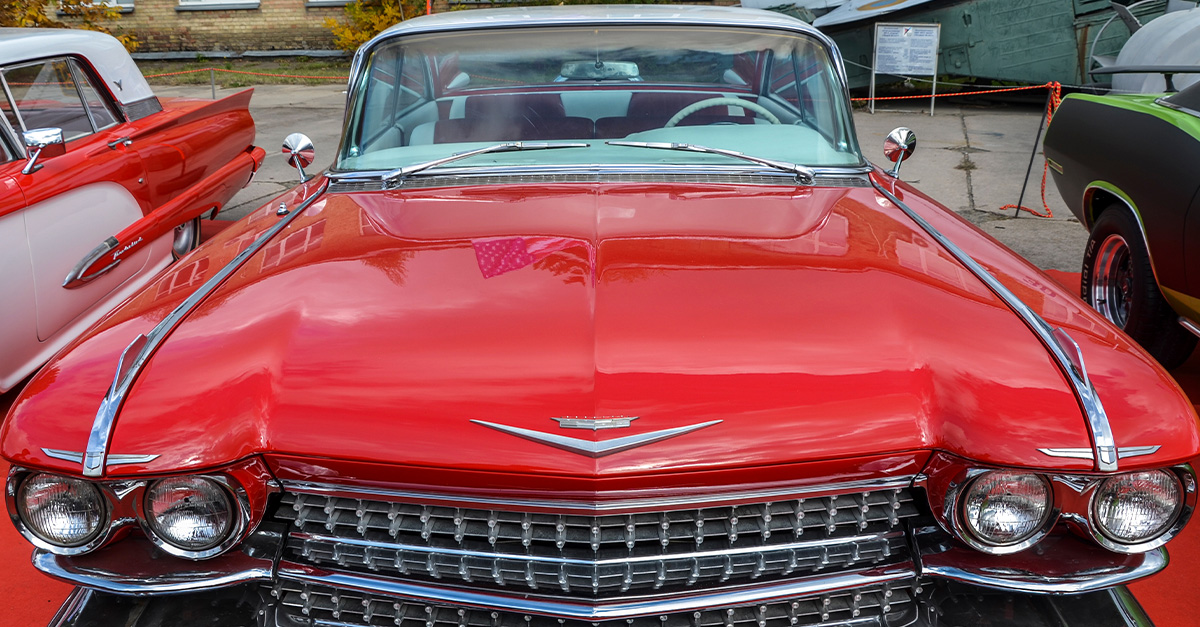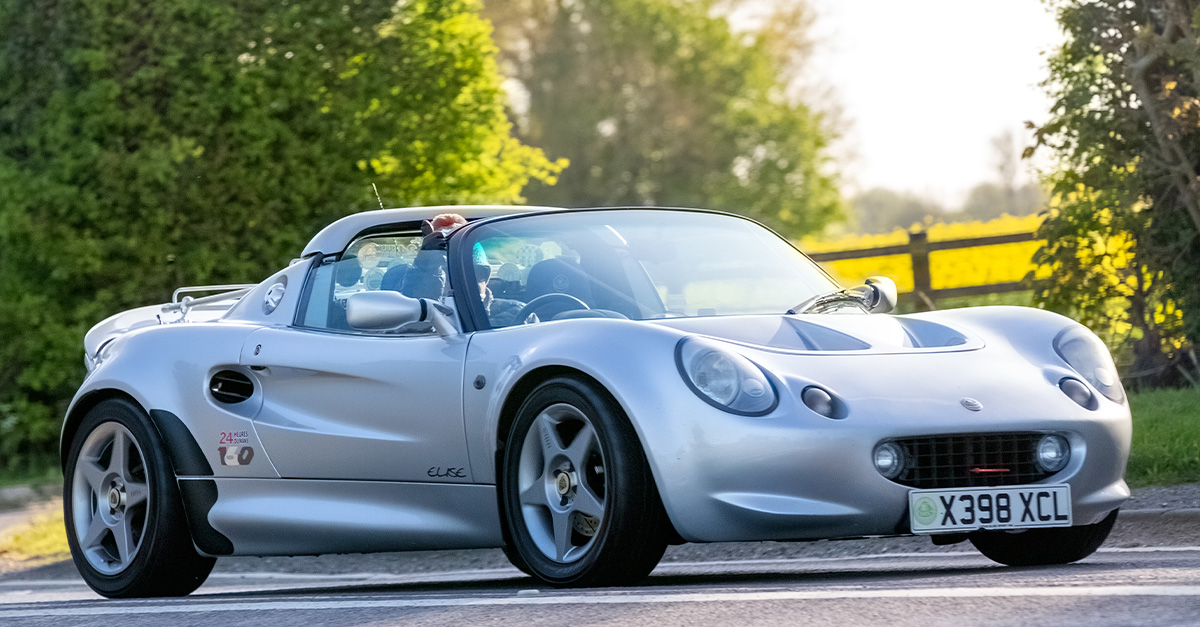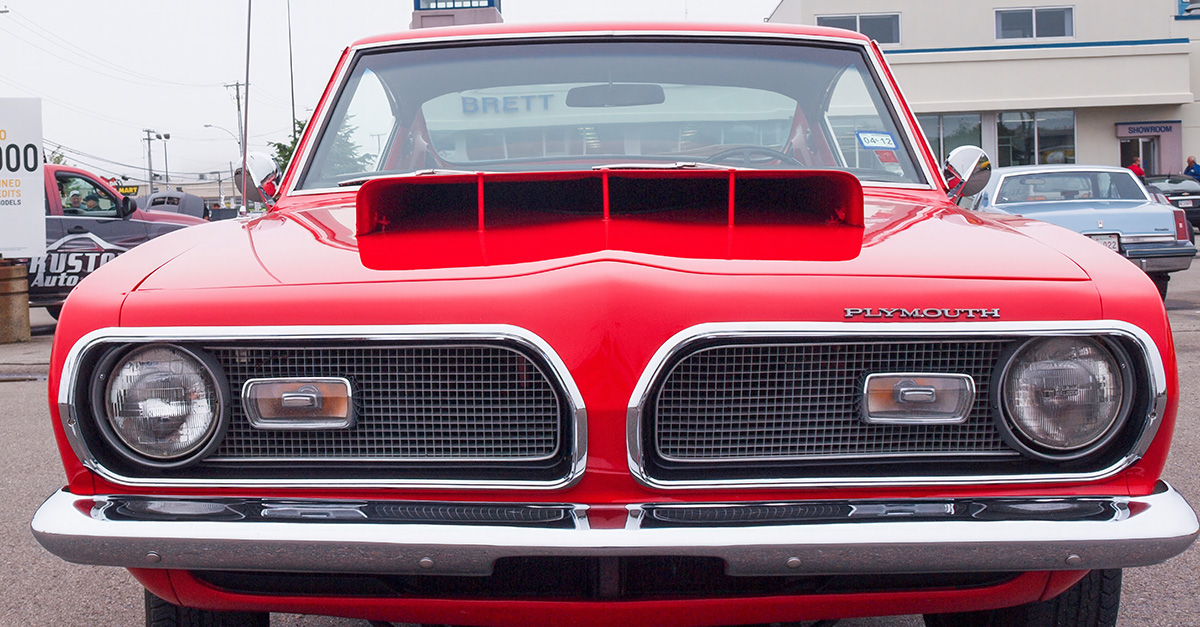Cars From The '80s That Are Worth Remembering
The 1980s were a time of big hair, corny TV, and music loaded with synthesizers. That era also brought us quirky Japanese cars, white-painted hatchbacks, European performance cars, and several other semi-forgotten vehicles.

20 Vehicles Only True Cars Fans Will Recognize
Although the automobiles from this decade weren't all great, many were interesting. There was a fresh wave of muscle cars, with Buick's turbocharged V-6s and Jeep's rugged model. Europe even joined in with flashy supercars like the Lamborghini Countach. These 25 rides will test your '80s car knowledge.
 Ank Kumar, CC BY-SA 4.0, Wikimedia Commons
Ank Kumar, CC BY-SA 4.0, Wikimedia Commons
Pontiac Trans Am (1982–1992)
Pontiac launched the Trans Am in 1969 as a powerful upgrade to the Firebird. By 1985, it had become a stylish two-door coupe with a 205 HP V8. With a louvered hood, fog lights, and an optional wing-style spoiler, it soon hit the movies.
 Sicnag, CC BY 2.0, Wikimedia Commons
Sicnag, CC BY 2.0, Wikimedia Commons
It Was A Movie Star
Besides its bold "Screaming Chicken" hood decal, the Trans Am became iconic through movie appearances. "80 kids would remember Michael Knight's (David Hasselhoff) battles against bad guys with KITT—his chatty supercar/sidekick. KITT was a modified 1982 Trans Am built by George Barris, "The King of the Kustomizers".
 Chile, CC BY-SA 2.0, Wikimedia Commons
Chile, CC BY-SA 2.0, Wikimedia Commons
1984 Audi Sport Quattro
The Sport Quattro was Audi's gift to the World Rally Championship—thank goodness for its all-wheel drive. It also had ABS, four-wheel drive, heated seats, and self-locking differentials. After Audi's unveiling at the Geneva Motor Show, rally racing cars felt the heat from its 2.1-liter turbocharged engine.
 AlfvanBeem, CC0, Wikimedia Commons
AlfvanBeem, CC0, Wikimedia Commons
Record Setter
This Quattro became a motorsport icon with about 306 HP (228 kW) engine that left competitors trailing. After French rally legend Michèle Mouton flew above Pikes Peak's clouds in record time, Bobby Unser and Walter Röhrl set records with evolved versions. But even after its popularity, there are only around 200 units of this car.
 Charles, CC BY 2.0, Wikimedia Commons
Charles, CC BY 2.0, Wikimedia Commons
1989 Callaway Speedster Corvette
In 1989, Callaway Cars took a Chevrolet Corvette to new heights with a 5.7-liter turbocharged V8 engine producing 450 HP. It became like European supercars that could do 190 mph—with the right driver, though. Then, Callaway decided to complement the Speedster's insane performance with a sleek design.
 Mr.choppers, CC BY-SA 3.0, Wikimedia Commons
Mr.choppers, CC BY-SA 3.0, Wikimedia Commons
An Open-Air Beauty
The roofless Speedster was distinct, with a low-cut windshield, eighteen-inch wheels, and blue German leather that made it look the part. The [first] bright lime green ZR1 appeared often in magazines and ads. Sadly, Callaway blessed Earth with only about 12 Speedsters, so they're rare and highly valued.
 Mr.choppers, CC BY-SA 3.0, Wikimedia Commons
Mr.choppers, CC BY-SA 3.0, Wikimedia Commons
Honda CRX
Let's teleport back to the '80s in this Honda CRX. At just 3.67m long, this compact Japanese car looks like a teenager in an adult suit when it's the only car in a large parking lot. However, it quickly became a favorite of city people.
 LoneStarPhD, Wikimedia Commons
LoneStarPhD, Wikimedia Commons
It Was Designed After An Alfa Romeo
The 860kg CRX was designed after an Alfa Romeo GT Junior Zagato, which the designer owned. It stood out for its agile handling and pop-up headlights, the features that are practical enough for daily drivers. And when a CRX HF model broke the 50 mpg barrier, Honda attracted sporty guys.
 crash71100, CC0, Wikimedia Commons
crash71100, CC0, Wikimedia Commons
The Car’s Rich Pop Culture History
This rex has appeared in movies like The Fast and the Furious, Janet Jackson's forgettable Poetic Justice, and Terminator 2 Judgment Day. When R. Straman Company transformed 310 CRXs into convertibles, Road & Track also featured the Straman-built Spyder in their July 1984 issue.
 Rutger van der Maar, CC BY 2.0, Wikimedia Commons
Rutger van der Maar, CC BY 2.0, Wikimedia Commons
1988 BMW M3
After their success with the 3 Series, BMW decided to create a car that combined everyday use with the thrills of motorsport. In the mid-80s, they built the M3 as a high-performance version of the 3 Series. It had a powerful 2.3-liter engine and sharp handling.
 Mr.choppers, CC BY-SA 3.0, Wikimedia Commons
Mr.choppers, CC BY-SA 3.0, Wikimedia Commons
Built For Movies, Track, And Gaming
The M3 also had flared wheel arches, a front spoiler, a rear wing, and aggressive styling that made it stand out in its German Touring Car Championship campaign. Moviegoers may recognize this car from The Transporter, while gamers may have driven it in Need for Speed: Unbound.
 Calreyn88, CC0, Wikimedia Commons
Calreyn88, CC0, Wikimedia Commons
Toyota MR2
During the global oil crisis, Toyota started building the MR2 (Midship Runabout 2-seater) in the late '70s to create an affordable, fuel-efficient sports car. After the prototype appeared in 1981, the MR2 officially launched in Japan the following year. It quickly became popular in racing circuits.
The Mid-Engine Racer
There are about 14-18 rounds in each Toyota MR2 Championship season. Drivers competed in six-eight double or triple-header race weekends driving modified MR2s. However, the standard version is a lightweight vehicle with a mid-mounted 1.6-liter engine capable of reaching 0-60 within 6.5 seconds.
 Princess.Tilly, Wikimedia Commons
Princess.Tilly, Wikimedia Commons
The 1982 Lancia 037 Group B Is A Rare Breed
When Lancia wanted to challenge fierce Group B racing rivals like Audi and Peugeot, it unveiled the 037 at the 1982 Rally Costa Smeralda. In 1983, 037 made history with its 265 HP supercharged engine, which was later upgraded to approximately 320 HP in 1984. It became the last rear-wheel-drive car to secure a World Rally Championship title.
 Steven Straiton, CC BY 2.0, Wikimedia Commons
Steven Straiton, CC BY 2.0, Wikimedia Commons
Jeep Cherokee
SUVs took a big step forward when Jeep released the Cherokee XJ in 1984. It was the first SUV with a fully integrated body-and-frame design that saved fuel and improved handling. As expected, it was compact and rugged enough for city streets and off-road trails.
The First Of America's SUVs Is A Movie Star
This popular off-road racing Jeep model is the Eric Roberts of movies, considering how often directors cast it in them. Due to its unibody design, it may be one of the most filmed rides of the last two decades. It appeared in Buckaroo Banzai, Bob's Burgers, U.S. Marshalls, The Goldbergs, and Eli Stone.
Saab 900 Turbo
Merging features like an intercooler and a computer-controlled fuel injection were rare in the '80s. When Saab brought this innovation to the Saab 900 Turbo, the market welcomed the vehicle with open hands. After all, it was also James Bond’s favorite car.
 ReneeWrites, CC BY 4.0, Wikimedia Commons
ReneeWrites, CC BY 4.0, Wikimedia Commons
007 Drove A Saab
The Swedish 900 Turbo was an upgraded Saab 99 with a hatchback design, wraparound windshield, and front-wheel drive. It had a "Turbo APC" system that adjusted performance based on driving conditions. The Silver Beast was James Bond's ride in the novels Licence Renewed, For Special Services, and Icebreaker.
 nakhon100, CC BY 2.0, Wikimedia Commons
nakhon100, CC BY 2.0, Wikimedia Commons
Lamborghini Countach
When Lamborghini unveiled the Countach prototype at the 1971 Geneva Motor Show, it quickly became the dream car for millions worldwide. Its iconic scissor doors and powerful V12 engine were eye-watering, unreal-looking features. Designer Marcello Gandini and engineer Paolo Stanzani broke design rules with careless abandon.
 Brian Snelson, CC BY 2.0, Wikimedia Commons
Brian Snelson, CC BY 2.0, Wikimedia Commons
It Was Powerful And Stylish
The Countach's LP400 had a sharp, wedge-shaped design. It was novel and revolutionary and set a new style for supercars. To complement the car's looks, the designer added a 3.9-liter V12 engine capable of 180 mph. Another variant, the Countach 5000QV, was issued a Group B homologation certificate.
 Thesupermat, CC BY-SA 4.0, Wikimedia Commons
Thesupermat, CC BY-SA 4.0, Wikimedia Commons
A Cool Name For A Cool Car
Like icing on a cake, the supercar's name improved its appearance by adding personality. The Countach broke Lamborghini's tradition of naming cars after famous bulls and bullfighting. In Piedmontese, a region northwest of Italy, "Countach" is an exclamation of astonishment. Everyone loved this model, including movie directors.
 Michael Gil, CC BY 2.0, Wikimedia Commons
Michael Gil, CC BY 2.0, Wikimedia Commons
Hollywood Fame and Wild Stunts
The Countach starred in blockbuster movies like The Cannonball Run featuring Burt Reynolds and Jackie Chan. Director Martin Scorsese even smashed a real 25th Anniversary Edition Countach in the award-winning Wolf of Wall Street. Ralph Lauren and Mario Andretti were often photographed behind the wheels of their Countachs.
 Alexandre Prévot, CC BY-SA 2.0, Wikimedia Commons
Alexandre Prévot, CC BY-SA 2.0, Wikimedia Commons
1987 Porsche 959
Despite unveiling this car in 1983 at the Frankfurt Motor Show, Porsche took four more years to perfect it because of its advanced technology. They could only build around 337 units, but their hard work paid off. On release, Porsche set the benchmark for supercar speed.
 Michael Barera, CC BY-SA 4.0, Wikimedia Commons
Michael Barera, CC BY-SA 4.0, Wikimedia Commons
The Speedster Of The Era
When the car—originally meant for Group B racing—finally debuted in 1987, it cost a whopping $225,000. It also amazed the world with its 450-HP twin-turbo engine and PSK all-wheel drive. The Porsche 959 could reach about 200 mph and hit 60 mph in just 3.6 seconds.
 Alexander Migl, CC BY-SA 4.0, Wikimedia Commons
Alexander Migl, CC BY-SA 4.0, Wikimedia Commons
1986 Lancia Delta Integrale
The Lancia Delta started life as a simple hatchback in 1979, but the Delta HF 4WD with turbocharging and all-wheel drive paved the way for the 1986 Delta Integrale. With its 185-HP turbocharged engine and four-wheel drive, this powerful upgrade was meant to dominate roads and rallies.
 Berkshire, CC BY 2.0, Wikimedia Commons
Berkshire, CC BY 2.0, Wikimedia Commons
Classic Italian Turbocharged Ride
The Delta Integrale soon became a rally legend after winning World Rally Championships from 1987 to 1992. Drivers loved its agility, enhanced suspension, and larger intercooler. Today, it's celebrated in movies and video games. There's even an entire episode on Wheelers Dealers titled Lancia Delta HF Integrale 8v.
 KarleHorn, CC BY 3.0, Wikimedia Commons
KarleHorn, CC BY 3.0, Wikimedia Commons
1986 Ford Sierra RS Cosworth
Ford launched this car in 1982 as a sleek, family-friendly replacement for the Ford Cortina. But things changed when the carmaker started eyeing Group A racing success. Then, Ford joined forces with Cosworth to build a reimagined, turbocharged Sierra RS Cosworth to dominate streets and racetracks.
 Calreyn88, CC BY-SA 4.0, Wikimedia Commons
Calreyn88, CC BY-SA 4.0, Wikimedia Commons
The Racing Champion
After its 1986 debut, the Sierra RS Cosworth became popular in motorsport. Its distinctive "whale tail" spoiler and aerodynamic design generated significant downforce. RS variants took first position in the 1987 World Touring Car Championship, had a 1988 DTM win, and won the 1990 British Touring Car Championship.
 Jeremy, CC BY 2.0, Wikimedia Commons
Jeremy, CC BY 2.0, Wikimedia Commons
1981 Renault 5 Turbo
The 1981 Renault 5 Turbo changed how the world saw the hot hatch concept with its mid-engine layout and distinct look. This compact car was first shown at the Brussels Motor Show in 1980. It had wide fenders and a turbocharged engine producing apmost 160 HP.
 MrWalkr, CC BY-SA 4.0, Wikimedia Commons
MrWalkr, CC BY-SA 4.0, Wikimedia Commons
The Hot Hatch Rally Winner
Although Renault designed this Turbo model for street use, modified variations participated in rally competitions. On its debut, Jean Ragnotti drove a Renault 5 to a memorable win at the 1981 Monte Carlo Rally. The carmaker had unlocked the trick to leveraging turbo technology in road cars.
 Daniel Jolivet, CC BY 2.0, Wikimedia Commons
Daniel Jolivet, CC BY 2.0, Wikimedia Commons
1988 Porsche 944 Turbo S
Porsche's main aim in building the Porsche 944 was to give the 924 a fitting successor with a better driving experience. By the late '80s, Porsche enhanced the 944's performance with the Turbo S variant to compete with the era's high-performance sports cars.
 S Pakhrin, CC BY 2.0, Wikimedia Commons
S Pakhrin, CC BY 2.0, Wikimedia Commons
Silver Speedster
The 1988 Porsche 944 Turbo S used a 2.5-liter turbocharged engine, producing around 250 HP with a 164 mph top speed. It had the famed KKK K26-8 turbocharger unit. It's a favorite among car enthusiasts and gamers, especially those who play Need for Speed: Porsche Unleashed.
 Kieran White, CC BY 2.0, Wikimedia Commons
Kieran White, CC BY 2.0, Wikimedia Commons
A Look That Matched Its Legendary Performance
As one of the fastest four-cylinder cars of the era, Porsche didn't slack on appearance. They wanted the Turbo S to look good—at least for people who judged books by their covers. They gave it a Silver Rose Metallic finish and a Burgundy plaid interior screaming '80s.
 KSE6J8ZpynMR, CC BY-SA 4.0, Wikimedia Commons
KSE6J8ZpynMR, CC BY-SA 4.0, Wikimedia Commons
Mitsubishi Starion
In 1982, Mitsubishi designed a sports car that could compete among the best-turbocharged performance vehicles. This new model could go 0-60 mph within around 7.2 seconds. A variant had box flares, an aero kit, hemispherical combustion chambers, and an intercooled turbocharger. Besides performance, it also looked good.
 Jeremy, CC BY 2.0, Wikimedia Commons
Jeremy, CC BY 2.0, Wikimedia Commons
The Celestial Turbocharged Starion
The Starion had a huge 2.6-liter "Astron" engine, pop-up headlights, and flared fenders. Then, Mitsubishi christened the car with a celestial name, supposedly, coined from the "Star of Orion" to complement its sporty look. In 1983, a modified 4WD Starion won the grueling Paris-Dakar rally's experimental class.
 Riley, CC BY 2.0, Wikimedia Commons
Riley, CC BY 2.0, Wikimedia Commons
Buick Grand National GNX
After its introduction in 1982, the Buick Grand National quickly stood out for its turbocharged V6 and distinctive blacked-out styling. By 1987, Buick collaborated with ASC/McLaren to develop the GNX. Ultimately, they built an elite high-performance version with additional exterior modifications and performance upgrades.
 Greg Gjerdingen, CC BY 2.0, Wikimedia Commons
Greg Gjerdingen, CC BY 2.0, Wikimedia Commons
Buick's Black Beast
The 1987 GNX had a 3.8-liter turbocharged V6 with an official 276 HP, though the actual output was closer to 300 HP. It could sprint 60 mph in 4.7 seconds, easily outrunning most sports cars. Today, a meager 500+ production units make the GNX a rare collectible.
 Captainpisslord, CC0, Wikimedia Commons
Captainpisslord, CC0, Wikimedia Commons
1981 Lancia Beta Monte Carlo
Lancia developed the Beta Monte Carlo to expand its lineup with a sporty model for daily drivers and motorsport. The car's fiberglass body reduced weight to about 970kg and increased performance. It also had a wedge-shaped, aerodynamic profile with distinct pop-up headlights.
 Charles01, CC BY-SA 4.0, Wikimedia Commons
Charles01, CC BY-SA 4.0, Wikimedia Commons
The Pininfarina-Designed Mid-Engined Italian
The Monte Carlo was one of the first cars with a fully independent suspension system on all wheels. The North Americans called this mid-engined Italian the "Lancia Scorpion" due to trademark issues. It often competed in Group 5, racing against fierce competitors with top drivers like Henri Toivonen.
 Vllmtt, CC BY-SA 4.0, Wikimedia Commons
Vllmtt, CC BY-SA 4.0, Wikimedia Commons
AMC Eagle
AMC's chief engineer, Roy Lunn, is often credited with creating the AMC Eagle. He designed this model when the brand wanted to meet the growing demand for a city car that could handle rugged terrain. The '80s were all about adventure, and Americans needed a ride for off-road activities.
Comfortable, Sporty Crossover
Buyers could choose from two-door sedans, four-door sedans, or station wagons. Comfortable, sporty, rugged. No wonder this crossover vehicle sold almost 200,000 units and continued briefly as the "Eagle Wagon" after Chrysler acquired AMC in 1988. The AMC Eagle appeared in MythBusters and Ghostbusters II.
1981 Lotus Sunbeam
When Chrysler Europe and Lotus Cars partnered to create a performance powerhouse, they built a limited-production, competition-tuned machine with a powerful engine and agile handling. The model stood out on rally stages with its twin Weber carburetors, proving that this high-performance Lotus was born to compete.
 davocano, CC BY 2.0, Wikimedia Commons
davocano, CC BY 2.0, Wikimedia Commons
Rally And Motorsport Legend
After debuting at the 1979 Geneva Motor Show, the Lotus Sunbeam earned its place in motorsport. When legends like Henri Toivonen and Russell Brookes handled this sporty two-tone paint ride, Talbot claimed the World Rally Championship manufacturers' title in 1981. Today, collectors cherish the 2,000+ units made.








